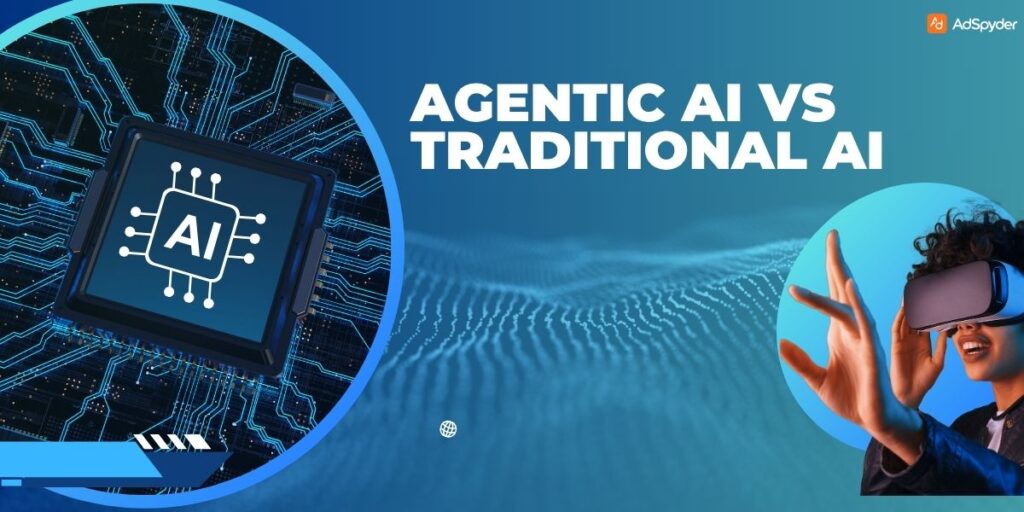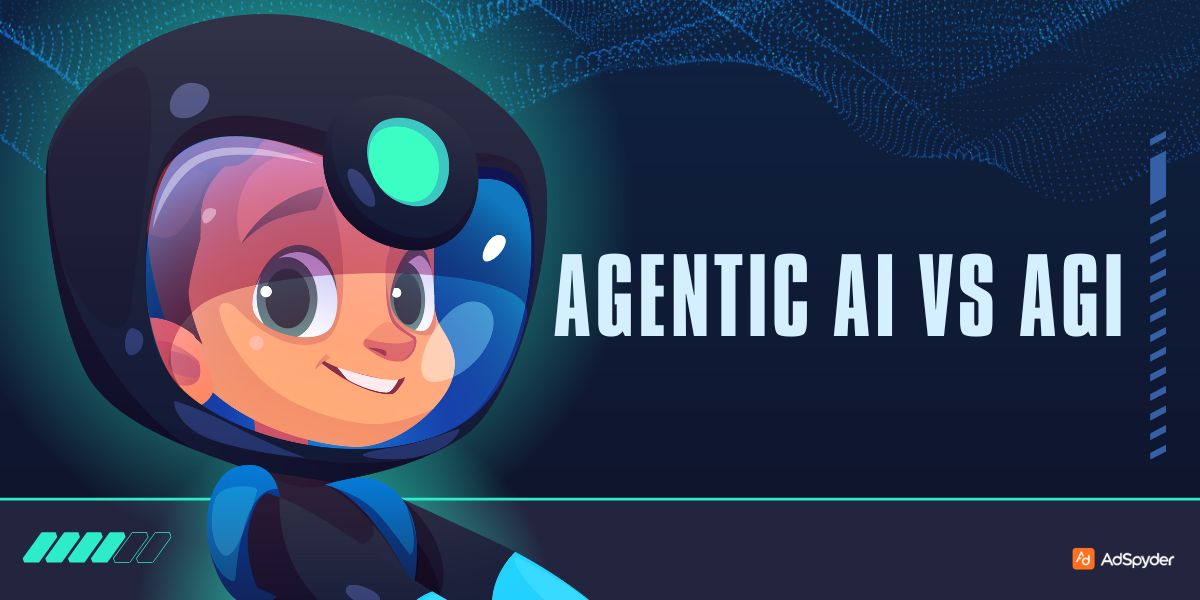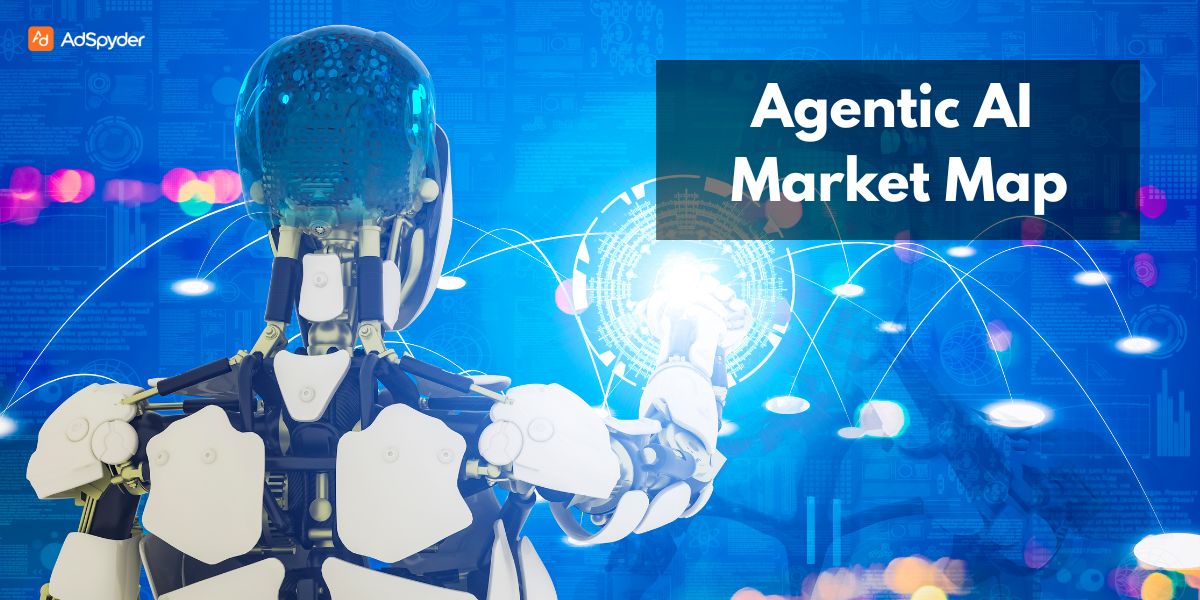Artificial Intelligence has evolved through several phases—from rules-based systems to machine learning to today’s LLM-powered agents. At the center of this evolution is a growing shift from Traditional AI to what we now call Agentic AI. While both terms fall under the broad umbrella of AI, they reflect very different approaches to design, functionality, and application. Understanding their differences is critical to selecting the right AI model for your business, product, or workflow. In this article, we’ll compare Agentic AI vs Traditional AI across use cases, capabilities, and architecture.
Ready to Elevate your Marketing Strategy?
What is Traditional AI?
Traditional AI refers to systems based on:
- Rule-based logic
- Expert systems
- Classical machine learning (e.g., decision trees, SVMs, clustering)
- Statistical pattern recognition
These systems are built to solve narrow, predefined problems using structured data and domain-specific models.
Examples of Traditional AI:
- Email spam filters
- Credit scoring models
- Chatbots with keyword triggers
- Image classification using CNNs
- Fraud detection algorithms
Traditional AI is deterministic, requires upfront training, and performs well in bounded, repetitive tasks.
Related – Agentic AI vs RAG
What is Agentic AI?
Agentic AI is a modern system design built around large language models (LLMs), enhanced with planning, memory, and tool use to enable autonomous task execution. Unlike traditional systems, agentic agents are goal-driven, not task-bound.
Characteristics of Agentic AI:
- Natural language-based interaction
- Plans multi-step tasks based on intent
- Uses tools and APIs dynamically
- Reflects and adapts based on outcomes
- Stores and retrieves context via memory
Agentic AI is not hardcoded. Instead, it reasons through problems using language and interacts with external systems to carry out user-defined goals.
Key Differences: Agentic AI vs Traditional AI
| Dimension | Traditional AI | Agentic AI |
| Task Scope | Narrow, specific | Broad, general-purpose |
| Input Type | Structured data | Natural language, semi-structured prompts |
| Adaptability | Low | High (via LLM + planning + memory) |
| Learning Method | Pre-trained or supervised | Prompt-driven, with real-time learning |
| Autonomy | Minimal | High (plans and acts without intervention) |
| Execution | Static logic | Dynamic decision-making |
| Tool Use | Rare or fixed | Core to function (APIs, scripts, services) |
| Feedback Loops | Manual or batch retraining | Built-in for self-adjustment |
Example Scenario: Support Ticket Resolution
Traditional AI Approach:
- Uses a classifier to categorize ticket type
- Routes ticket to predefined escalation logic
- Sends canned responses based on intent detection
Agentic AI Approach:
- Interprets ticket content using an LLM
- Pulls related documents or past case data (via RAG)
- Calls APIs to update user accounts or reset services
- Summarizes resolution and sends a personalized follow-up
- Logs the outcome for future learning
Agentic AI doesn’t just assist; it takes ownership of the task from input to outcome.
Check Out – Agentic AI vs LLMs
Limitations of Traditional AI
- Requires curated training data and feature engineering
- Struggles with ambiguity or novel inputs
- Limited generalization beyond the training scope
- Not built for multi-tool interaction or autonomous planning
- Expensive to reconfigure or scale to new domains
When to Use Each
| Use Case | Best Fit |
| Image classification in medical scans | Traditional AI |
| Automating helpdesk workflows end-to-end | Agentic AI |
| Customer churn prediction from CRM data | Traditional AI |
| Personalized onboarding across apps | Agentic AI |
| Inventory optimization with numeric data | Traditional AI |
| Multi-app orchestration based on user input | Agentic AI |
Complementary, Not Competing
Despite their differences, Traditional AI and Agentic AI can coexist. Many modern agentic systems use traditional models as tools—for example:
- A churn prediction model can be called by an agent to determine outreach urgency
- An image classifier can be embedded inside an agentic pipeline for real-time analysis
In this way, Traditional AI becomes a component, while Agentic AI acts as the orchestrator.
Final Thoughts for Agentic AI vs Traditional AI
Traditional AI laid the groundwork for automation across industries. But as user expectations and business complexity grow, static logic and narrow models fall short.
Agentic AI extends the promise of AI—from prediction to action. It adds the layers of autonomy, flexibility, and integration needed for real-world use: from intelligent support agents to autonomous coding assistants and adaptive business process engines.
Understanding the distinction helps teams choose not just what AI to build, but how to build it for continuous impact.
Explore Now – Agentic AI vs Generative AI
FAQs for Agentic AI vs Traditional AI
What is the main difference between Agentic AI and Traditional AI?
Traditional AI solves narrow problems using predefined logic or models. Agentic AI is designed to handle broad tasks autonomously using LLMs, planning, tools, and feedback loops.
Can Agentic AI replace Traditional AI?
Not entirely. Agentic AI offers broader capabilities, but Traditional AI still performs better in domains requiring precision with structured data, like image recognition or time-series forecasting.
Does Traditional AI use natural language?
Generally no. Traditional AI models operate on structured data and rely on engineered features. Natural language processing (NLP) exists within Traditional AI but lacks LLM-level reasoning.
What makes Agentic AI more adaptive?
Agentic AI adapts through language-based planning, memory systems, and feedback mechanisms, allowing it to adjust based on real-time results and changing goals.
Is Agentic AI just LLMs with extra steps?
It’s much more. Agentic AI combines LLMs with memory, planning modules, tool use, and execution engines to form autonomous systems—not just content generators.
Which is more scalable: Agentic AI or Traditional AI?
Agentic AI is more scalable across domains because it generalizes via language understanding. Traditional AI scales within a domain but requires retraining or reprogramming for new tasks.
Are the two approaches ever used together?
Yes. Agentic AI can call Traditional AI models as tools—for example, using a fraud detection model or image classifier as part of a larger decision-making loop.
Which one is more explainable?
Traditional AI (especially rule-based systems) is often easier to explain. Agentic AI, while more capable, can be more opaque due to LLM complexity unless built with observability tools.
Does Agentic AI require training like Traditional AI?
No. Agentic AI uses pre-trained foundation models and prompt engineering instead of custom model training. However, it may use traditional models for sub-tasks.
When should I use Traditional AI instead of Agentic AI?
Use Traditional AI for structured-data problems like fraud detection, recommendation engines, or classification tasks. Use Agentic AI for dynamic, multi-step workflows involving natural language.




